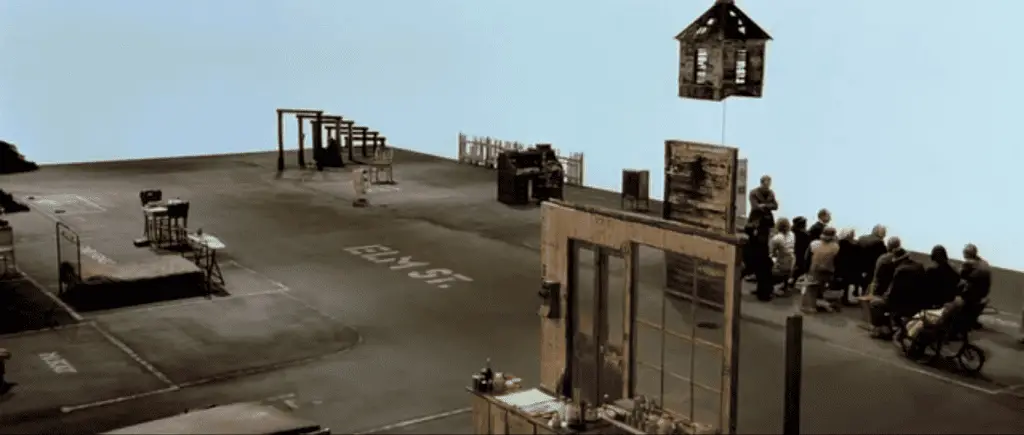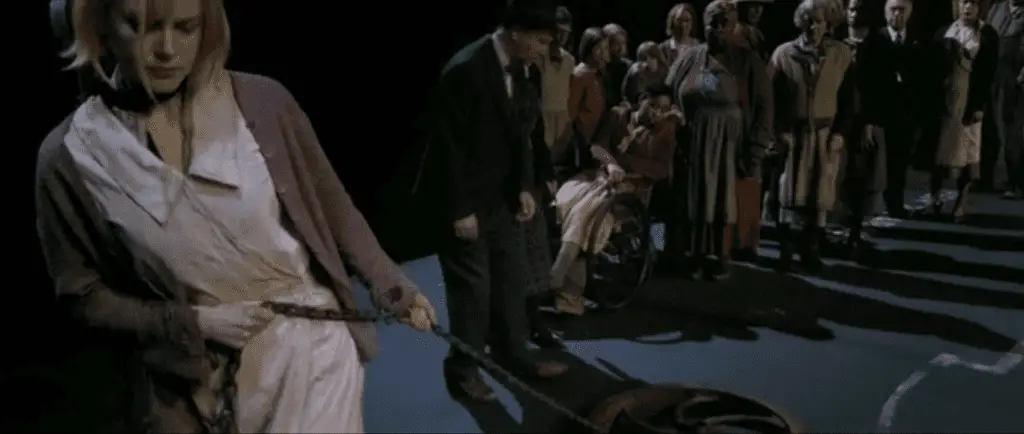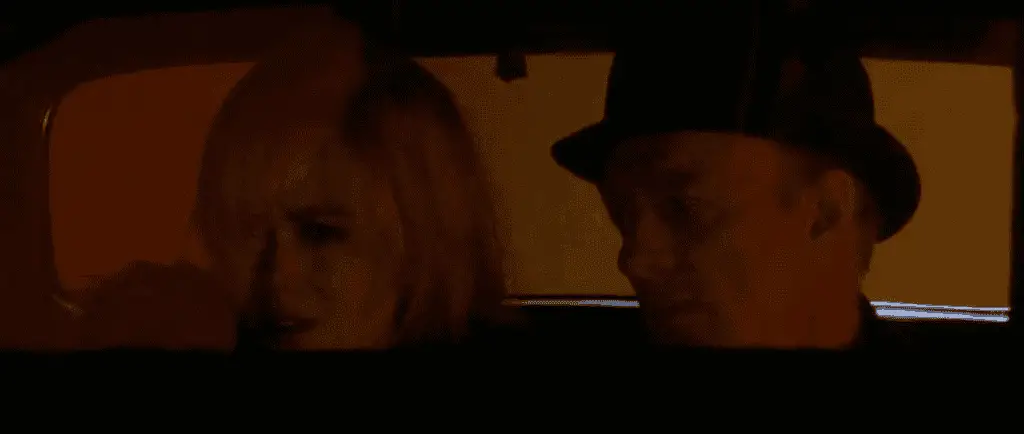The film “Dogville” by one of the most daring directors of our time – the world famous Dane Lars von Trier – is often perceived as a kind of monolithic block, which not everyone is able to master. And those who did overcome it, practically unanimously assert that the film is unambiguously strong, albeit very difficult.

In general, Lars von Trier, in principle, does not have light calm pictures that could be watched to raise the mood, strengthen faith in the best, relax and pacify. Take the same “Dancing in the Dark”, “Melancholy” or “Antichrist”. This is a director who loves bold projects, who often challenges society and is not afraid to defend his views, even if society does not share them too much.
But back to Dogville. According to the director, his goal was not to make the audience associate themselves with one of the opposing sides: with the main character or with the inhabitants of the town. In his story, he kind of distances himself from everything that happens on the screen, giving us the opportunity to simply observe the actions of people and evaluate them from the point of view of their moral principles and ideas about human nature. Is it inevitable that such a cruel attitude towards a kind-hearted stranger? Can love coexist with the daily contemplation of the suffering of its object? Does revenge justify killing more than two dozen people?
Ditching decorations in favor of absolute sincerity
It is quite difficult to surprise the modern viewer with a complex and contradictory plot, but it is quite possible to surprise with an extremely unusual design of each frame. Therefore, perhaps the most characteristic feature of “Dogville” is the almost complete absence of decorations (with the exception of a few doors, a couple of cars and a small amount of furniture). Everything else: walls, bushes, a dog – is simply conventionally marked with chalk, and the entire site is placed in one plane. Why? Naturally, because all this is absolutely unimportant. After all, “Dogville” is a parade of human characters, and not an attempt to graphically recreate the atmosphere of small American towns of the first half of the twentieth century.

This is how Dogville “looks” in the daylight
Nicole Kidman admitted in an interview that due to the lack of scenery she felt as if naked. The experience of playing in other films taught her to partly “hide” behind things, interior items, buildings, trees, as if to give them part of the work to convey the desired mood. Here, she, like other actors, was required to maximize, absolute sincerity, into which it was necessary to invest all her energy, and thanks to which she received a unique experience.
Directing the filming process in von Trierovski
The director is interesting for his unusual approach to absolutely everything. For example, he is very fond of creating characters based on the characters of the actors who are to play them, and was not too lazy to do this in the case of “Dogville”. For example, before forming the image of Grace, he asked Nicole Kidman in detail about how she relates to life, what she believes, what she considers valuable, and so on, and similar questions were repeated with almost every actor.

Of course, the rest of the characters received from their actors more peculiarities of temperament than narrow-mindedness and cruelty.
Another interesting nuance is that Lars von Trier does not like it when the actors working with him memorize their lines. They should read them immediately before working on the relevant scene, and then feel free to improvise. In addition, the director himself stood behind the camera, and in some cases even held Kidman’s hand, as if helping her to play especially difficult scenes.
In other words, a lot of what you saw while watching Dogville was not so much a thoughtful script as living people with their own characters, a living director with his own view of the world and how all these unique personalities interact with each other. This is a picture filled with real, practically unplayed emotions, absolute honesty in front of the viewer and merciless exposure of the undisguised truth.
Grace Mulligan: compliant and principled
In the course of the development of the plot, Grace can cause different feelings in the audience: you want to support her, then feel sorry for her, then scold her for allowing people to push her around. In general, it would be foolish to expect a movie like Dogville to create unambiguous characters that could be categorically labeled as “good” and “bad”.

For Grace, obeying is not about breaking.
We can only say for sure that Grace Mulligan has her own principles, and she remains true to them. Yes, sometimes it gets her into very difficult life situations, but we have no right to assert that the heroine has no inner core.
City dwellers: well-bred and inhuman
The conclusions and behavior of the townspeople during the film are also perceived ambiguously. Something can be approved (at least at the beginning of the picture), something – uncompromisingly condemned.
But even here there is no black and white as such. After all, it is unlikely that a thinking viewer will not think about how realistic it is for conservative residents of a small town near the mountains to do just that in real life. How likely is it that this fits into the framework of their worldview, and that they simply are not able to expand them in order to see the picture more adequately.

Cute townspeople turn into violent monsters so quickly it seems completely natural
If we take all this as a metaphor, then one can involuntarily ask the question: which of our own actions could seem inhuman and ridiculous if our life were also broadcast on the screen? After all, it is quite possible that a lot of things we are simply not able to see, and that in some situations we behave like primitive ignoramuses.
How Dogville was invented
When it comes to such large-scale and well-known projects, it becomes interesting what was the starting point for their creation. In the case of “Dogville”, such a primary “impetus” was the song of the pirate Jenny from the play “Threepenny Opera” by Bertold Brecht. Jenny worked in a small hotel and dreamed that one day a ship would enter the port and destroy everything around her. That the people who got off the ship would ask Jenny who should be killed for her. And that she will answer without any doubts: everyone.
Little-known sequel to the film
“Dogville” has become a legend, and few people remember that initially Lars von Trier thought about creating a whole trilogy. Moreover, he even shot a second picture, called “Manderlay”, which is also quite interesting and may appeal to fans of the first part. Another thing is that many of the actors in the first film did not take part in the filming of Manderley: Grace Mulligan played Bryce Howard, and James Caan, who got the role of Grace’s father in Dogville, refused to continue working with von Trier on principle. The reason was political differences: as a conservative, Kaan reacted negatively to the director’s rather anti-American views.

Neither Nicole Kidman nor James Caan played in the sequel to Dogville.
So, if you love serious film projects and have not yet watched Dogville, then you should definitely watch, despite the fact that the film has been running for almost three hours. Trust me, you will not regret the time spent. Well, if you have already enjoyed this masterpiece, then perhaps it’s time to revise it, or try to appreciate “Manderley”.







